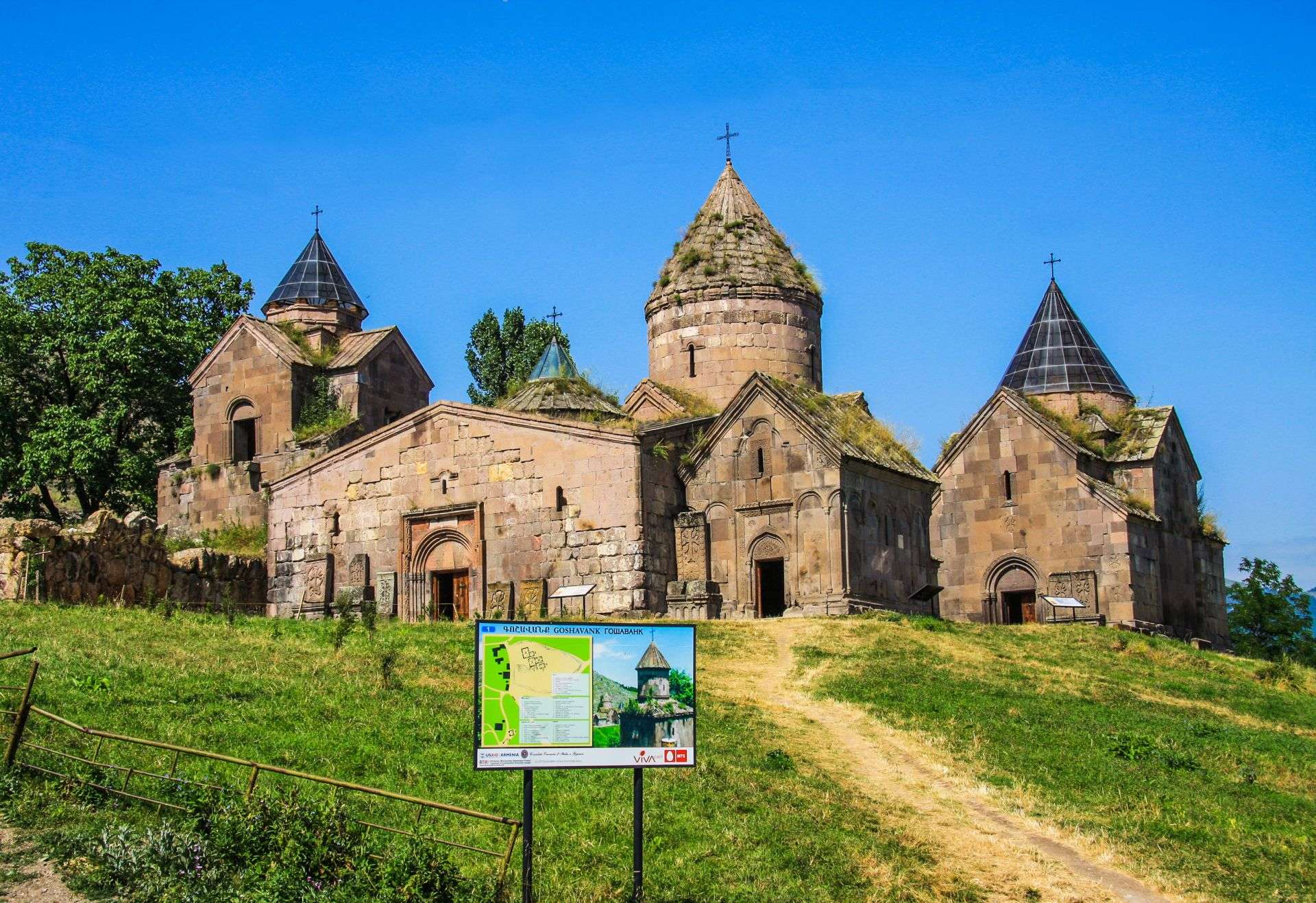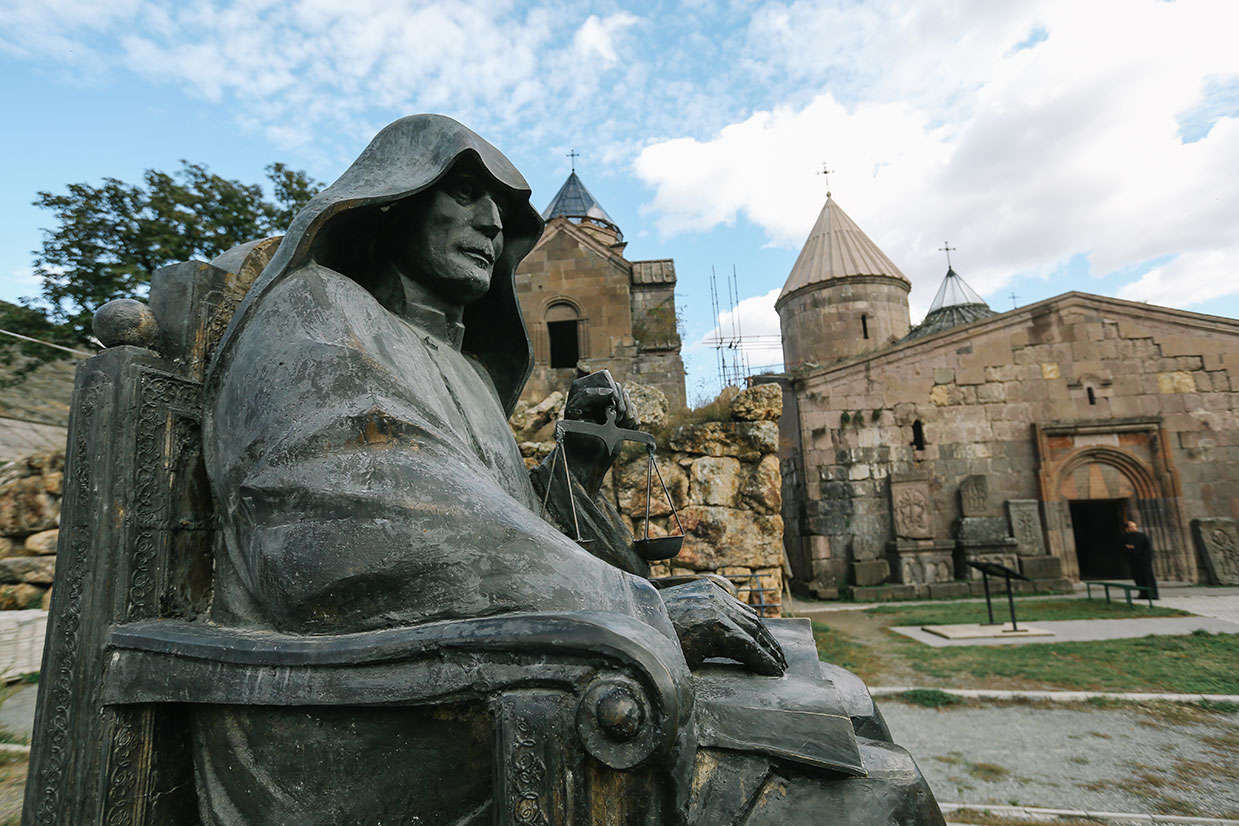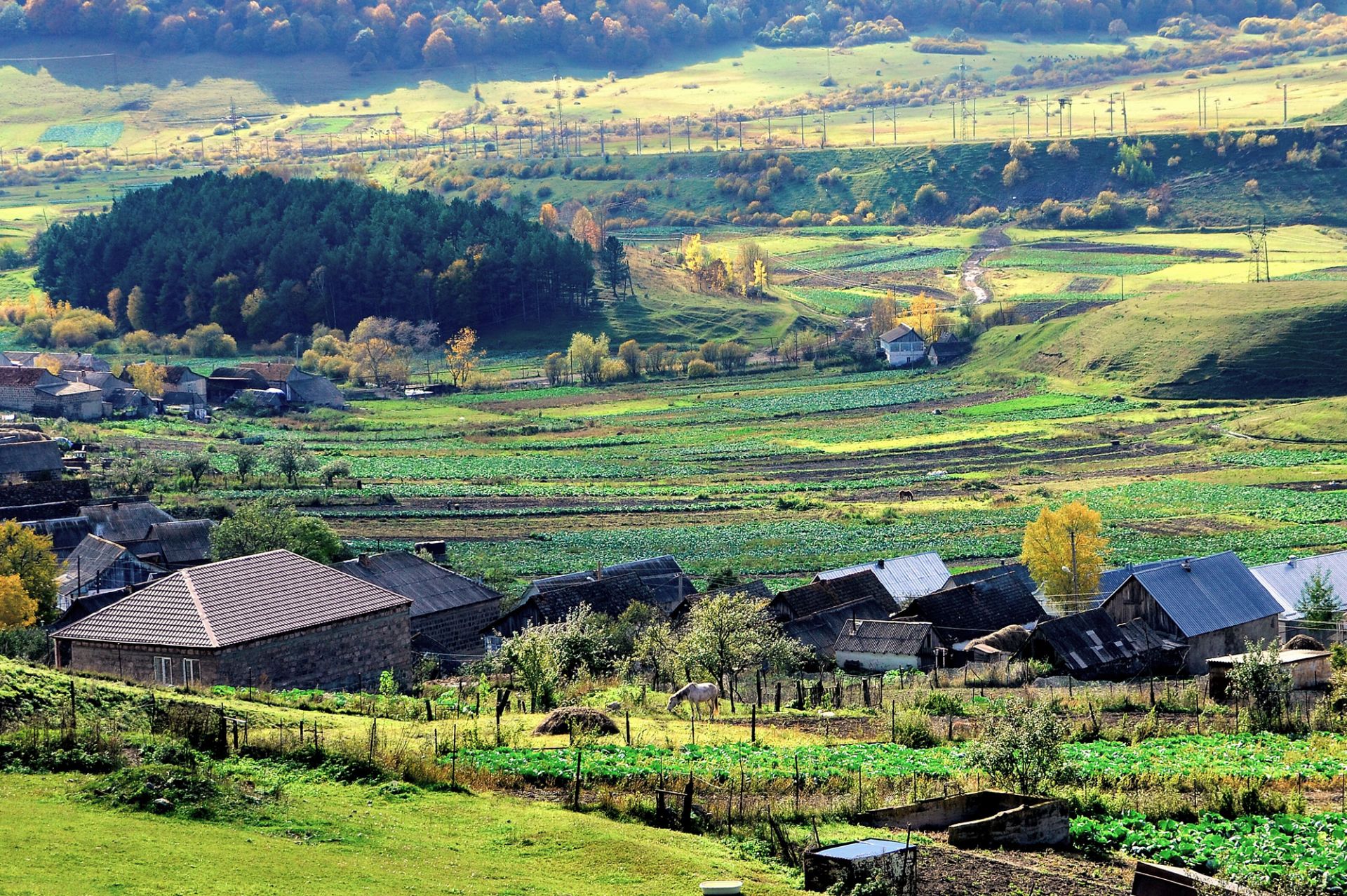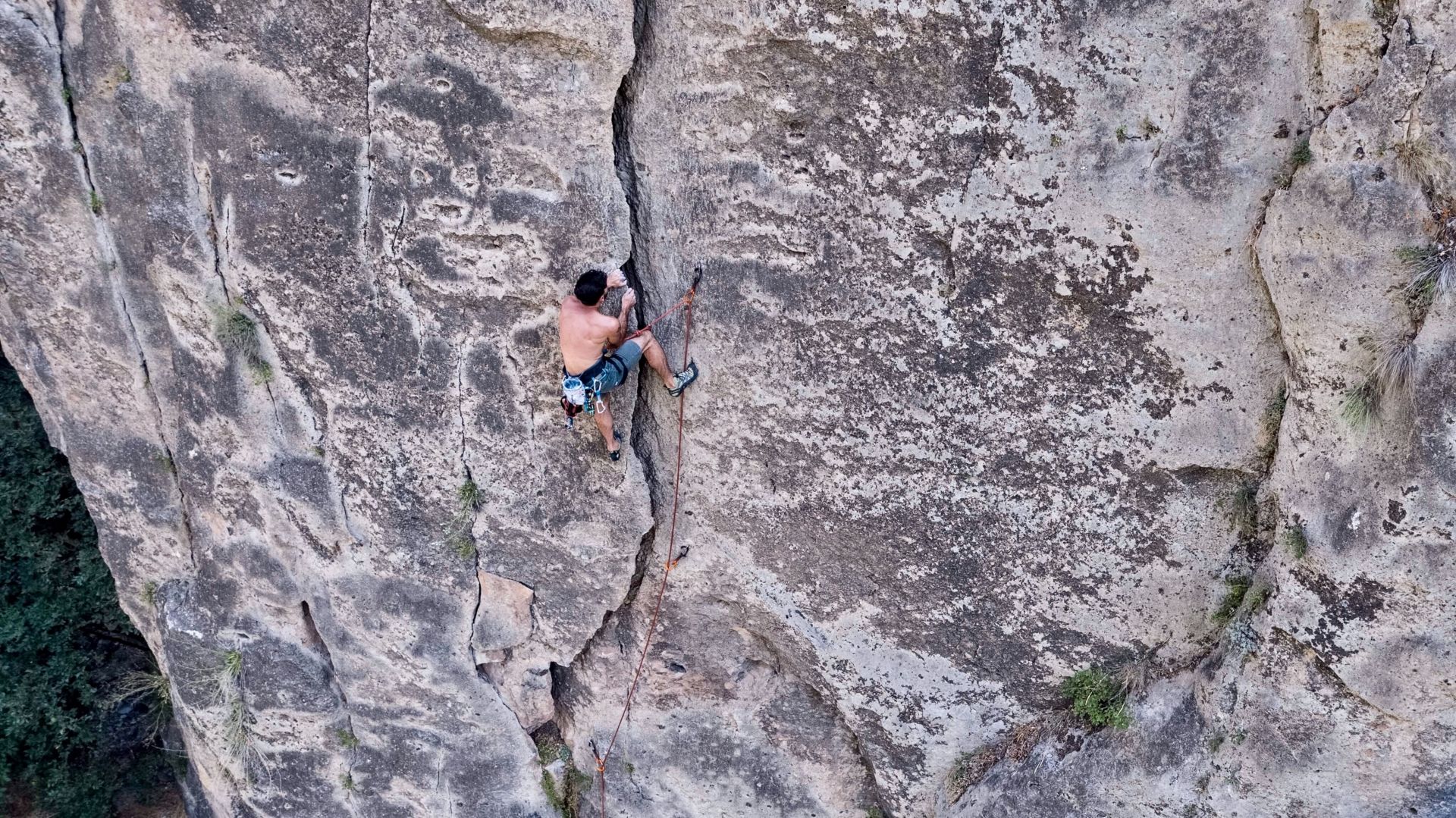Goshavank Monastery
The monastery was built not far from the ruins of an older monastery named Getik, which was destroyed by an earthquake in 1188. The present monastery is sometimes referred to as "Nor Getik" (New Getik). It is located in the wooded valley of the village of Gosh in the province of Tavush. Tavush is located in the northeast of Armenia. The provincial capital and largest city of the province is Ijevan. The name of the province derives from the Tavush canton of the historical province of Utik of ancient Armenia. This region is mountainous and wooded and is home to many historic Armenian monasteries, churches, castles, fortresses and khachkars (cross-stones). The cultural heritage and natural monuments of the region attract a large number of tourists. In the 12th-13th centuries, Goshavank was one of the most important religious and scientific centres in medieval Armenia. It was built by Mkhitar Gosh and bears his name today. Goshavank is a masterpiece of Armenian architecture, many talented architects built its walls. Only the names of three persons are known: architect Mkhitar, his pupil Hovhannes and sculptor Poghos.
Mkhitar Gosh was born in the 1130s (there is no exact date). He was an Armenian scholar, writer, scientist, thinker, and priest. Many people from distant places came to him to become his disciples. He also wrote the first law book in the Armenian language. Gosh was also a really fabulous master. His good reputation was everywhere. The following structures belong to the monastery:
1. The Church of St. Gregory Lusavorich (the Illuminator): Construction of the church began in 1237 and was completed in 1241. It was taken by Prince Grigor Tgha ("tgha" means "boy"), who was adopted as a child by the Zakaryan family. That's why he got the nickname "Tgha". Despite its small size, the church of St. Gregory Lusavorich stands out at first sight. It is a single-nave church with unique windows on eastern and western walls. The arches of the church make the church appear larger than it actually is. The interior is very impressive. The altar is decorated with arches and geometric patterns.
2. Poghos Khachkar (Cross Stone): The cross-stones carved by Poghos have their unique place in the cross-stone art.
3. Gavit: gavit (narthex) has four pillars and was added in 1197-1203. In the middle of the roof, an eight-sided dome was built. The construction of the gavit was financed by Zakaryan brothers. This gavit is connected by a gallery of columns with another building, the first floor of which served as a library (1241). It is believed that the bell tower (1291) was housed on the first floor.
4. The Mother of God Church is the main church of the monastery and was built in the years 1191-1196. Prince Vakhtang of Haterk (Artsakh) and his wife financed the construction. The main entrance was added in 1197. Crosses and inscriptions are carved on the walls of the church. On the west facade, there is a sundial.
5. The Auditorium: Historical sources mention the existence of a school from the early 13th century, which is referred to as a pedagogical institute and university. The studies at Goshavank were rigorous. They studied foreign languages, grammar, philosophy, and calligraphy. Many famous Armenians have received their education here.
6. Mkhitar Gosh Mausoleum: In the west of St. Gevorg Church, Mkhitar Gosh built a chapel-mausoleum Holy Ascension. He is buried there. Nearby he also built the Church of the Holy Spirit, which has not been preserved.The complex also includes a library, St. Grigor Church, chapels and St. Gevorg Church.
The monastery Goshavank is a holy place. It was not only in the centre of attention of the Armenians but also of the foreigners. The nature in the area is splendid as well. That's why it's one of the best places to visit in Armenia.








